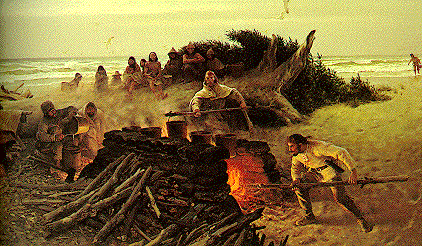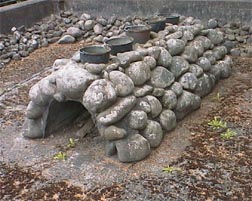His main purpose was to locate a route for a salt-making party. Though Clark was indifferent to salt, the rest of the expedition wanted it as seasoning. As their diet ranged from elk to fish and dog, salt improved the taste of their food and thus their morale.

Three men were constantly at work. Using five brass kettles, the saltmakers boiled approximately 1,400 gallons of seawater over the next several weeks. Three-and-one-half bushels of salt were produced for the return trip.


Prior to her death in 1905, she recalled her mother's memory of white men boiling water on that spot. In 1979, the site was donated by the Oregon Historical Society as an addition to Fort Clatsop National Memorial, which maintains it through a contract with the Seaside Lion's Club.